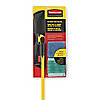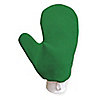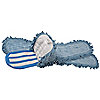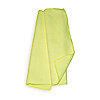How To Clean With Microfiber- Castle Rock CO
What is Microfiber?
Microfibers are densely constructed polyester and polyamide (nylon) fibers that are approximately 1/16th the thickness of a human hair. When woven together, these fibers create a net-like surface area covered with millions of spaces to trap moisture, dirt and debris. The micro fibers are able to get into tiny nooks and crevices whereas the traditional cotton cloth and mop fibers are not. The nylon component of the fiber also produces a static charge that attracts dirt, pulling it in and trapping it until the cloth or pad is washed.
Mopping – making the switch provides key benefits
Mopping represents one of the more popular uses of microfiber material. Using conventional cotton loop mops for wet mopping has long been the standard in floor cleaning for janitorial operations. Here are some key benefits of using microfiber for the mopping task:
- Enhances cleaning power – microfiber cleans more effectively, reaching into surface pores and crevices, where cotton mop materials are too large for deep cleaning.
- Contributes to reducing water and chemical usage – microfiber mops use about 10-20 times less liquid than standard cotton mops, helping reduce procurement costs. Very few microfiber applications require the use of chemicals.
- Helps increase productivity – the effort of dipping and wringing a conventional mop is eliminated. As long as the used microfiber mop head is not put back in the cleaning solution, the user does not have to change the solution between tasks.
- Helps reduce cross-contamination – healthcare facilities have been quick to embrace microfiber cleaning. In an effort to reduce cross contamination risk between patient rooms, some state laws require that maintenance personnel change out the mop and/or cleaning solution after every room. Using microfiber flat mops helps the facility comply with these requirements.
- Help reduce the risk of worker injury – microfiber mops weigh significantly less than conventional wet cotton loop mops, making them more ergonomic and easier to use.
Caring for microfiber
Due to the nylon component in microfiber, high levels of heat will break down the fibers and ruin its effectiveness. It is recommended that microfiber be washed in temperatures that do not exceed 200 degrees. Most cleaning detergents can be used. However, adding bleach and fabric softener is not recommended. Drying temperatures should not exceed 140 degrees.
Very few chemicals can harm microfiber. However, it is important to avoid acids. Read the warning label on the chemical container. If the chemical indicates that it will harm plastics, it will most likely harm microfiber.
Do not wash microfiber with materials that are prone to lint. In the laundry cycle, the microfiber will collect the lint and be rendered ineffective.
By following these simple care instructions, microfiber can be laundered anywhere from 100-500 times and remain an effective cleaning tool.
This info brought to you by TLC Carpet Care; 720.314.0178




